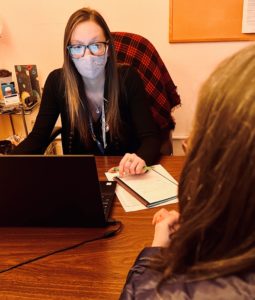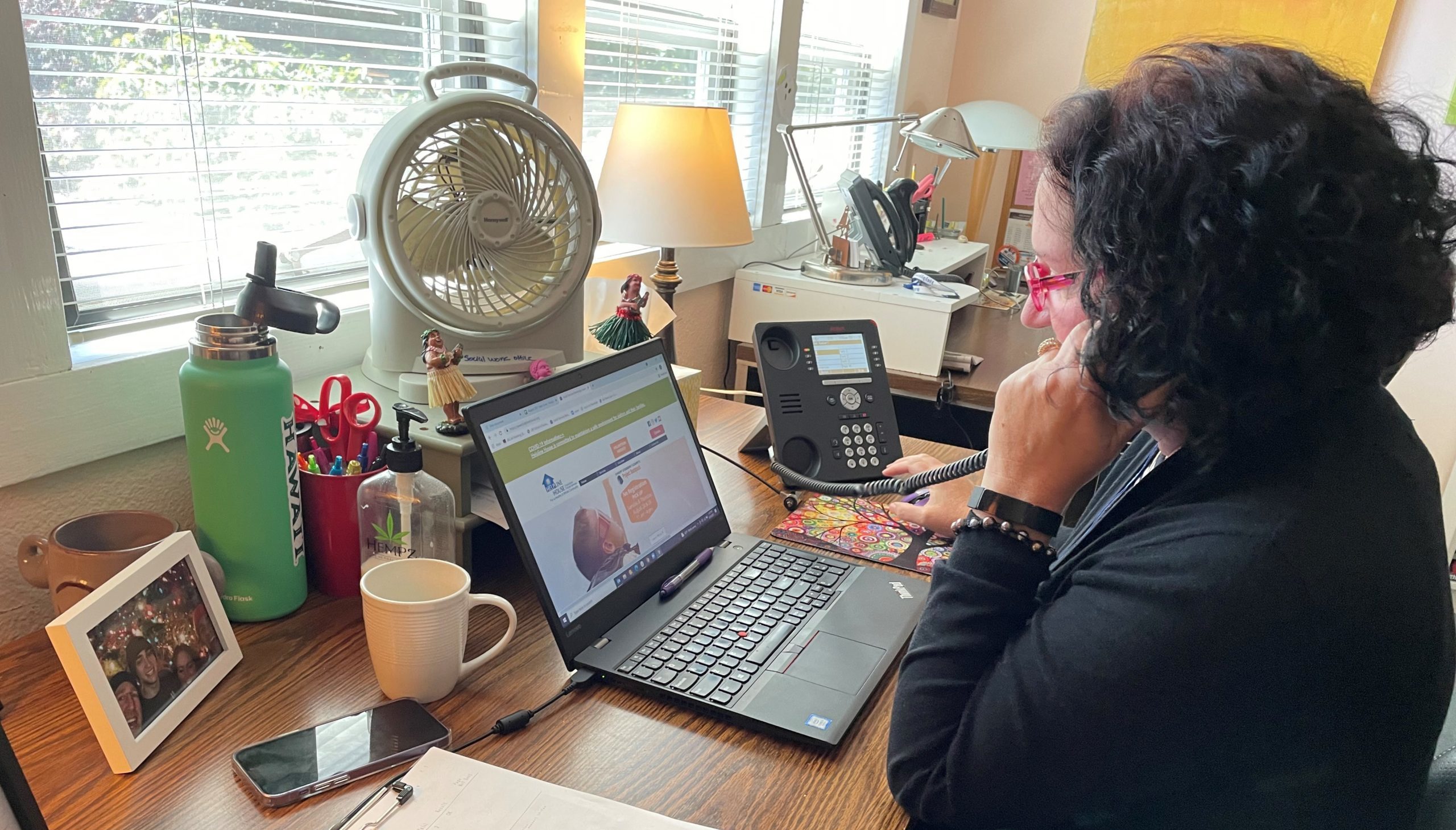The two nonprofits partner to deliver HRB’s Housing Stabilization Program. HRB provides housing. Helpline House brings social services. Together, they lay a path toward greater earning power.
“We are more than a landlord, but a partner and advocate,” says Marta Holt, HRB rental property and homeownership programs manager. Certainly, the landlord role is demanding: Each apartment has its own income requirements set by the government agency that funded its construction, and family size must correspond to the number of bedrooms. Lengthy waitlists are tended, and homes require diligent care. Yet this is only one part of our rental program.
HRB focuses on housing stability, which means building relationships with residents and often, helping with rent. About half our families receive rental assistance. Some have fixed incomes, either because of age or disability. Others work but do not earn enough to make rent without undue financial burden. Many in the latter group take part in our Housing Stabilization Program, which ties rental assistance to individual support services intended to increase earning potential. This case management is provided by Helpline House.
Executive directors Phedra Elliott of HRB and Maria Metzler of Helpline House are close colleagues, leading organizations with complementary missions.
“Housing insecurity undermines the wellbeing and future success of the people who seek out Helpline House services,” Metzler said. “Housing status is one of the first things to establish with anyone coming in the door. How can you talk about low-cost internet when someone is living out of their car?”
“I can’t count the number of times we’ve referred residents to Helpline House,” said Elliott. “It’s the only organization on the island providing this range and level of service. A stable and safe home is essential—we’ve got that covered. But we can’t meet all the other essentials for a healthy and fulfilling life, such as access to fresh food, affordable transportation, and support with the tasks of daily living.”
So when Holt, who manages the program, was looking to move the social services component from a county agency to one with greater availability and familiarity with the culture of the island, Helpline House was a natural choice.
The program keeps housing costs at 30% of household gross income, ensuring that there is money for food, healthcare, and other basic costs. It also provides a sense of security that allows people to feel like they can seek out professional development, daycare, mental health treatment, and investments that set the stage for more lucrative employment.
 Helpline House social workers meet with program participants to develop an action plan so that they might one day earn enough to pay rent on their own or move to open-market housing. Shawn Nigh, who sees the bulk of the participants, finds that many are ambitious and have well-defined career goals. One client, for example, plans to resume a nursing program, while another is researching business programs so that she might one day own a business of her own.
Helpline House social workers meet with program participants to develop an action plan so that they might one day earn enough to pay rent on their own or move to open-market housing. Shawn Nigh, who sees the bulk of the participants, finds that many are ambitious and have well-defined career goals. One client, for example, plans to resume a nursing program, while another is researching business programs so that she might one day own a business of her own.
In her year with the program, Nigh has witnessed many successes. With her help, a participant secured a childcare subsidy that enabled her to increase the number of hours she worked at an assisted living facility. Another, who speaks English as a second language, got a job at Town and Country Market where she relishes the opportunity to practice English with customers. Nigh also offers more general support, such as help navigating the healthcare landscape or simply the encouragement necessary to make such life changes.
Roughly a third of the 455 households receiving social work services at Helpline House are housing insecure. Many have exhausted private and public financial resources and live under the threat of eviction. “Their housing can be taken from them in a heartbeat,” said Nigh. Not so for her HRB clients. One, a mother of two, is contending with mental health challenges that were exacerbated during the pandemic. She only just returned to work one day a week with plans to gradually increase her hours, but even with this reduced schedule, she enjoys housing security.
Nigh sees how stable housing emboldens her clients, giving them the foundation from which to take on professional goals and pursue dreams. The ultimate goal, of course, is to leave the Housing Stabilization Program, with many telling Nigh that that they don’t want to be asking for help. For some, like the employee at the assisted living facility, independence is possible. She just moved into an apartment in the open market, albeit one priced below the going rate. For others, even those working full-time at essential jobs, the reality of wages and the real estate market makes it impossible. The solution here is plain—more affordable housing.
